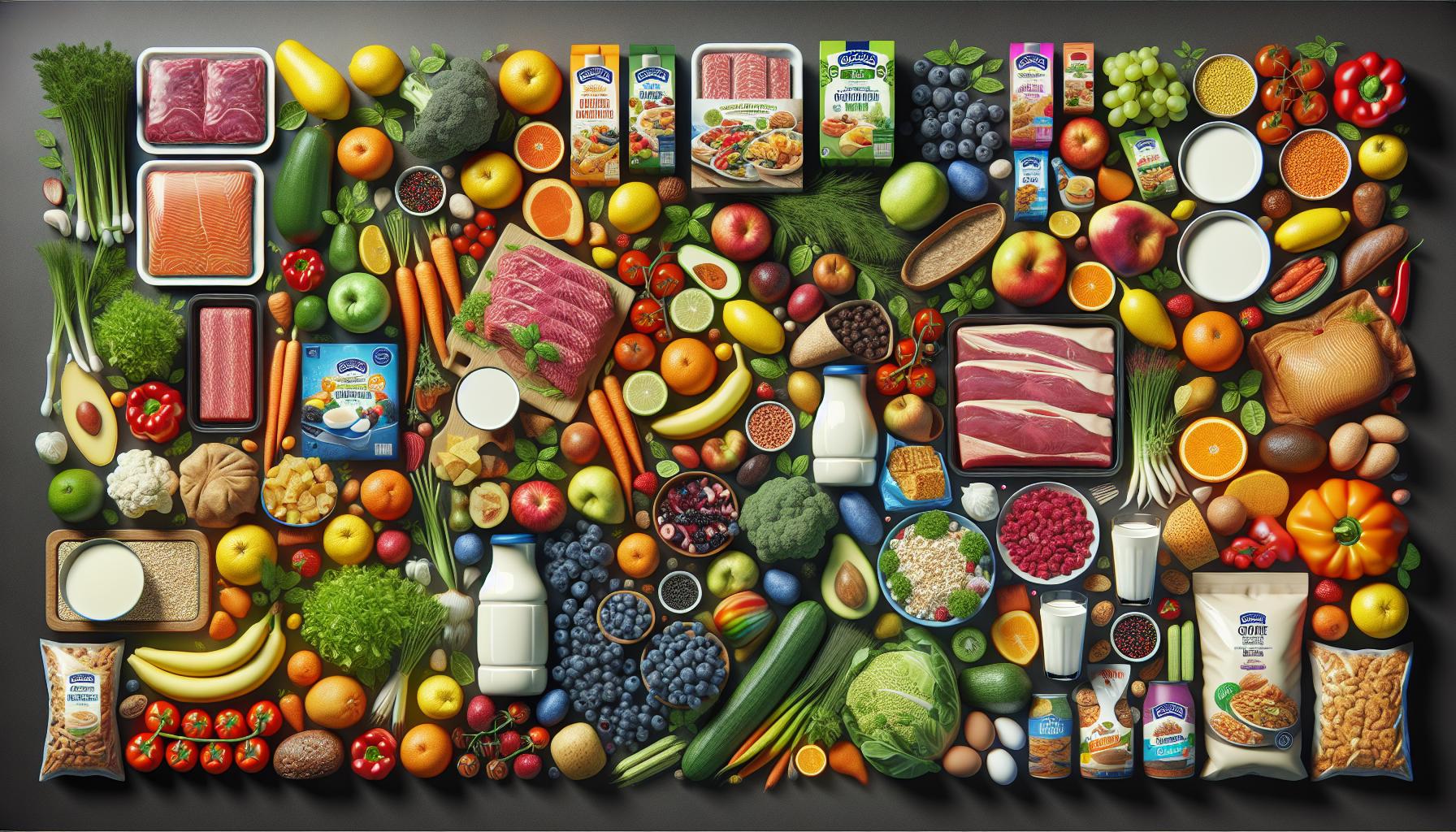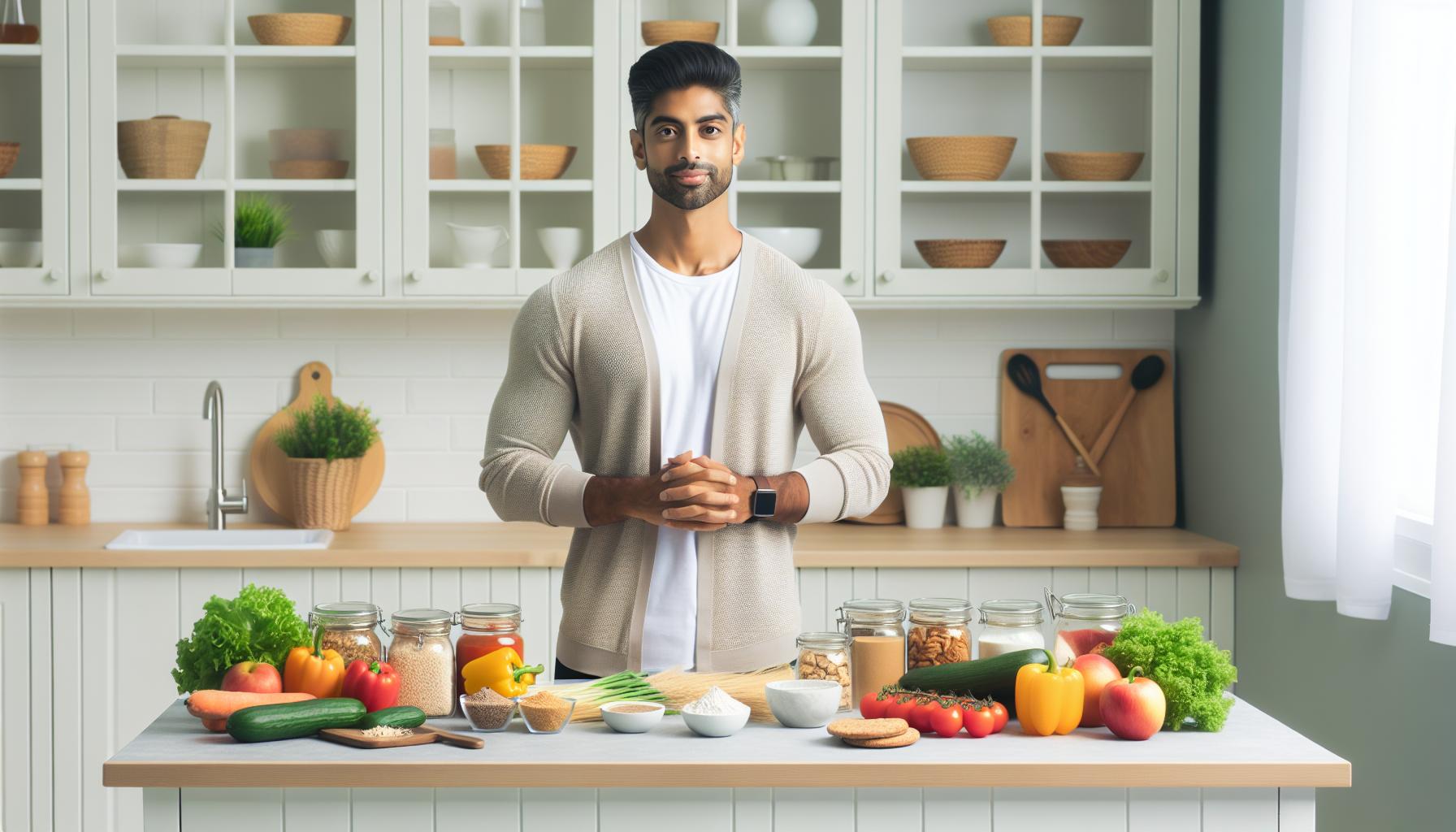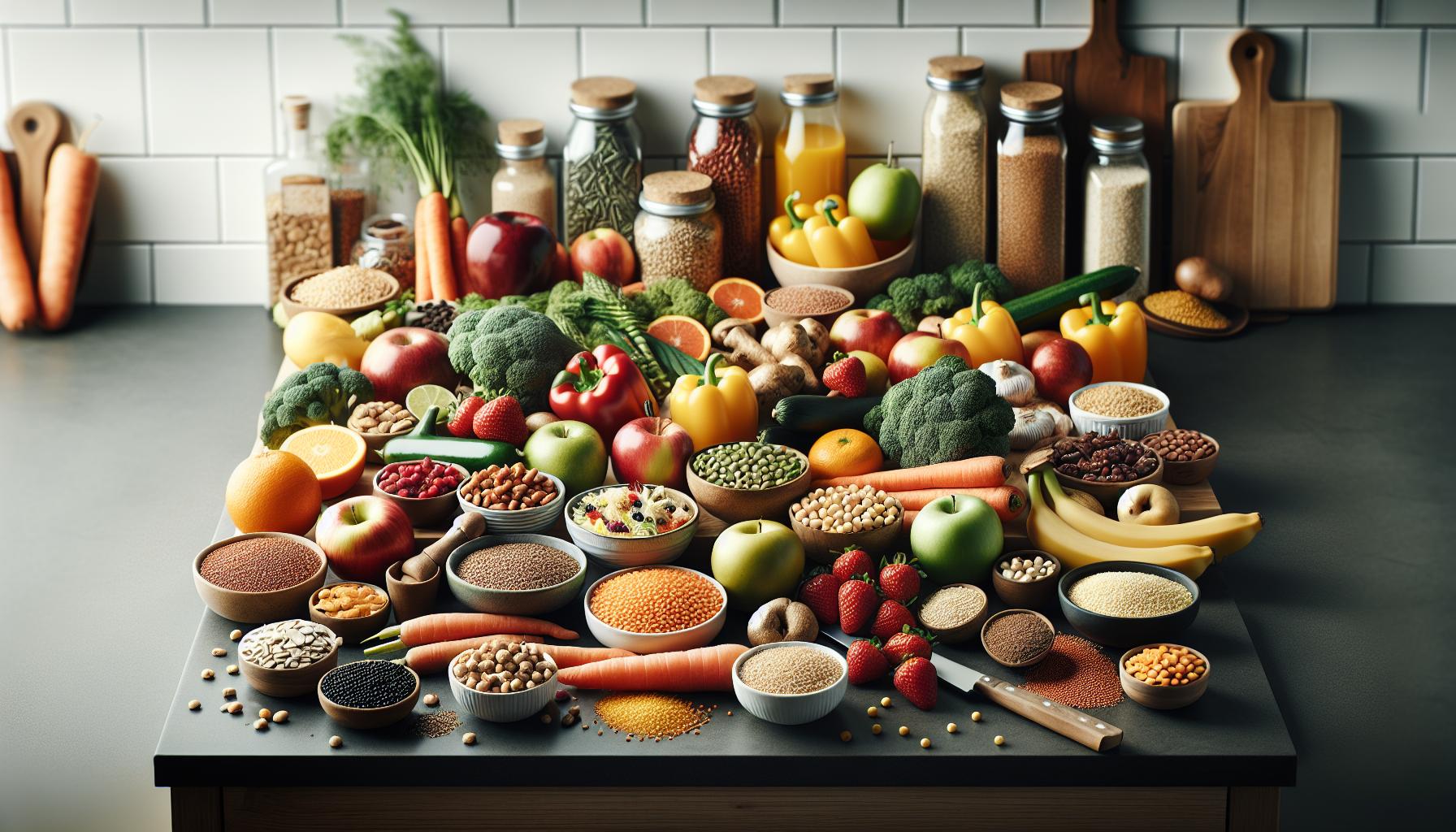Imagine exploring a world where everyday foods are potential foes, where dining out feels like a high-stakes game of trust. Welcome to the life of someone living gluten-free, a necessity not just a dietary choice for many. It’s a journey fraught with challenges, from deciphering food labels to resisting the allure of your once-favourite wheat-laden treats. Yet, it’s also a path to rediscovery—of flavours, health, and resilience. This article peels back the layers of gluten-free living, offering insights and practical tips that go beyond the usual fare. You’re about to begin on a culinary adventure that promises more than just safe eating; it’s about thriving in a gluten-filled world, armed with knowledge and delicious alternatives. Ready to explore the vibrant world of gluten-free living? Let’s immerse.
Understanding Gluten-Free Living
What is a Gluten-Free Diet?
Imagine walking through a market, where every aisle whispers tales of forbidden fruits, or in this case, grains. The gluten-free diet is akin to a navigational chart through this maze of groceries, steering clear of gluten—a protein found in wheat, barley, and rye. Picture gluten as the glue holding bread and pasta together, giving them their characteristic chewiness. Eliminating gluten from one’s diet transforms this mundane act of eating into a careful selection of foods that exclude this common yet controversial protein.
The Purpose of Gluten-Free Lifestyle
Embarking on a gluten-free journey is not usually a capricious decision but a necessary traverse for many. For individuals diagnosed with celiac disease, it’s akin to adopting a new lens to view the world—a lens that filters out gluten to protect their health. This lifestyle is not limited to those with celiac disease; it also beckons to those with non-celiac gluten sensitivity and wheat allergies, offering a refuge from the discomfort their bodies face in the presence of gluten. It’s a path chosen to skirt around the boulders of health issues, seeking smoother terrain on the other side.
Benefits and Risks of Gluten-Free Diet
Dancing the gluten-free waltz comes with its rhythms of benefits and risks. On one hand, those who have celiac disease or gluten sensitivity find relief, as if the silent symphony of discomfort has finally ceased. The benefits extend beyond symptomatic relief, embracing improved health and energy levels, and sometimes, a welcomed side effect of weight management. But, this dance is not without its missteps. The gluten-free diet can lead to deficiencies in essential vitamins and minerals, as gluten-containing grains are often fortified. Also, the high cost of gluten-free products can leave wallets feeling lighter, making it imperative to approach this lifestyle with both eyes open, informed, and ready.
Exploring gluten-free living is not just about dodging dietary bullets; it’s a complex ballet of choices, challenges, and triumphs. As you tilt your food compass towards gluten-free north, remember, this journey is yours—unique, evolving, and enriching. The path is studded with opportunities to rediscover food, to embrace community, and to redefine what healthy eating means to you. So, lace up your boots, set forth with confidence, and transform the gluten-free diet from a restriction into a liberation of your culinary world.
The Basics of Gluten-Free Diet

Exploring the world of gluten-free living can sometimes feel like decoding a complex map with hidden treasures and unexpected pitfalls. Your mission, should you choose to accept it, involves demystifying gluten’s hideouts, charting a course through safe dietary choices, and rediscovering joy in meals without feeling restricted. Let’s begin on this adventure together, decoding the essentials of a gluten-free diet, pinpointing common gluten culprits, and uncovering hidden sources that could derail your journey to wellness.
Components Allowed in a Gluten-Free Diet
Imagine your diet as a garden. Just as a garden thrives with a diversity of plants, your meals can bloom with an abundance of gluten-free options. In this garden, the soil is rich with naturally gluten-free foods: fruits that dazzle the senses, vegetables that anchor meals with their earthiness, meats and poultry that provide the building blocks for muscle and strength, fish that whisper tales of the ocean, and dairy that creams your coffee to perfection. Beans, legumes, and nuts scatter like seeds, promising nourishment and variety.
In the corner, there’s a plot for gluten-free grains; quinoa whispers secrets of ancient civilizations, millet rises like the morning sun, amaranth blooms with potential, and teff dances on the breeze of new beginnings. These staples don’t just fill the gap left by their gluten-containing counterparts; they offer narratives of cultures, traditions, and distant lands, inviting you to explore the world from your kitchen.
Common Foods that May Contain Gluten
Venturing further into the forest of foods, you’ll encounter paths intertwined with gluten. These are the well-trodden trails, where familiar companions like bread, pasta, and pastries lure travelers with their siren songs. These foods, along with their kith and kin—cereals, beers, sauces, and gravies—often harbour gluten, lurking beneath delightful exteriors.
Exploring this part of the journey requires a keen eye and a map—the ingredient list and food labels that guide you to safety. Remember, gluten isn’t just the enemy hiding in plain sight; it often wears disguises, masquerading as “food starch” or “malt flavouring.” Each label becomes a riddle to solve, a clue to unravel on your quest for wellness.
Identifying Hidden Sources of Gluten
Beyond the obvious lie the hidden realms, shadowy forests where gluten conceals itself within the most unexpected places. Imagine venturing off the beaten path and discovering traps set for unwary travelers: soups thickened into peril, condiments mixed with mischief, and imitation meats crafted from the essence of gluten. Even foods that whisper promises of being natural allies can turn their backs, tainted by cross-contact in fields, factories, or kitchens where gluten is a frequent guest.
The secret to exploring these realms isn’t just vigilance—it’s about building a network of trust. Connecting with gluten-free communities online and offline opens portals to shared knowledge and resources. Learning from the experiences of fellow travelers, you’ll find safe havens: certified gluten-free products, dedicated facilities, and eateries that understand the gravity of your quest.
Embarking on a gluten-free lifestyle isn’t merely about avoidance; it’s a journey of discovery. It’s finding joy in the simplicity of whole foods, the adventure of trying new grains, and the satisfaction of mastering gluten-free cooking. Beyond the challenges lies a richer, more vibrant food world, teeming with possibilities and new favorites waiting to be discovered.
Implementing a Gluten-Free Diet

Embarking on a gluten-free diet can sometimes feel like exploring a maze blindfolded—you know there’s an exit, but the path is fraught with twists, turns, and the occasional dead end. But, with the right knowledge and tools, what once seemed like a daunting challenge can transform into an empowering journey of health and discovery.
Reading Food Labels
Imagine for a moment that you’re an archaeologist, deciphering ancient scripts to uncover hidden secrets. Reading food labels as you adopt a gluten-free lifestyle requires a similar sense of curiosity and attentiveness. Gluten, a sneaky shapeshifter, hides under numerous aliases such as malt, hydrolyzed vegetable protein, and even “natural flavours”. Each label becomes a puzzle, with your health and well-being resting on solving it correctly. Remember, if the words wheat, barley, rye, or triticale make an appearance, the food is off-limits. But it’s not all hieroglyphs and mysteries—many products proudly proclaim their gluten-free status, making them safe harbours in the gluten storm.
Gluten-Free Packaged Foods Vs Fresh Foods
Diving into the world of gluten-free packaged foods versus fresh foods is akin to comparing a greenhouse to a wild garden. The greenhouse, with its controlled environment, offers safety and convenience, much like packaged foods that bear the “gluten-free” label. They reassure you with their clear boundaries, offering a safe haven for those just beginning their gluten-free voyage. Yet, this convenience often comes with a higher price tag and sometimes a compromise on nutritional value.
Conversely, fresh foods invite you into the wild garden of nutritional abundance. Fruits, vegetables, meats, and dairy do not require labels to communicate their safety; they are inherently free of gluten. Integrating these whole foods into your diet not only adds variety and flavour but also ensures you’re receiving a wealth of nutrients often missing from packaged alternatives. It’s a vibrant, colourful world out there—immerse, and you might discover taste and nourishment you never knew you were missing.
Exploring Gluten-Free Alternatives
The quest for gluten-free alternatives is an adventure in its own right. Who knew that the humble cauliflower could transform into a pizza base? Or that chickpea flour could conjure up a comforting slice of bread? The exploration of gluten-free grains—quinoa, buckwheat, amaranth, to name a few—opens up a treasure trove of culinary delights. Each grain brings its own unique texture and flavour, turning what could have been a dietary restriction into a celebration of diversity.
But the adventure doesn’t stop at grains. The exploration of gluten-free alternatives encourages creativity in the kitchen and invites you to experiment with new recipes and cooking methods. It’s an opportunity to rekindle your relationship with food, seeing it not as a list of restrictions but as a canvas for creativity.
As you navigate this new world, remember a gluten-free diet doesn’t equate to a flavour-free diet. It’s an invitation to explore, to taste, and to enjoy food in ways you might never have imagined. With each step you take, you’re not just walking away from gluten; you’re stepping closer to health, vitality, and a richer culinary world. So, lace up your boots, fellow explorers, and embrace the journey.
Gluten-Free Living Beyond Food

Embarking on a gluten-free lifestyle is akin to setting sail on uncharted waters. You’ve got your map for exploring the sea of food choices – from scouring labels in supermarket aisles to quizzing wait staff at your local eatery. But what about the hidden icebergs lurking beneath the surface, beyond the area of meals and snacks? Let’s jump into the depths of gluten-free living, beyond the plate.
Gluten in Medications and Supplements
Imagine this: You’re a detective in your own health mystery, piecing together clues that lead you to unexpected suspects – your medications and supplements. Gluten, a common binder in pills, can be the covert operative causing you harm, flying under the radar. It’s a reality that necessitates a fine-tooth comb approach to everything that enters your body.
Before you next swallow a pill or sprinkle a supplement, make a call to your pharmacist or doctor. Your daily multivitamin or headache pill could be a sneak attack on your gluten-free fortress. And while “gluten-free” labels have become a beacon for food, they’re not as common in the pharmacy aisle. It’s your cue to become an advocate for your health, asking the hard questions and sometimes seeking alternatives that align with your gluten-free commitment.
Avoiding Cross-Contamination at Home and in Restaurants
Cross-contamination is the gluten-free person’s game of Russian roulette. At home, your kitchen becomes a split personality – one part gluten-free sanctuary, the other a potential danger zone. Sharing a toaster can be like playing tag with gluten, where you’re always ‘it.’ The cutting board where yesterday’s bread was sliced? A minefield. It’s not about being paranoid but prepared. Separate utensils, toasters, even butter dishes, can mean the difference between a good day and a gluten-induced nightmare.
Eating out, on the other hand, is like stepping into a trust fall exercise. You’re putting your health in the hands of strangers, hoping they understand the stakes. Picking restaurants becomes a strategic operation, favouring those with gluten-free menus or, better yet, kitchens dedicated to keeping gluten at arm’s length. It’s about asking questions, even if it makes you ‘that person.’ After all, it’s your wellbeing on the line, not just a preference.
Embarking on gluten-free living goes beyond mere diet alterations; it’s a holistic approach to safeguarding your health. From the pills you pop to the precautions you take in kitchens not your own, every detail matters. It’s about vigilance, yes, but also about finding peace of mind in a world where gluten hides in plain sight.
Living Gluten-Free: Practical Tips

Embarking on a gluten-free journey often feels like the culinary equivalent of stepping onto a tightrope – it requires balance, focus, and a touch of bravado. But fear not, with the right tools and tricks up your sleeve, you’ll soon be walking it with the grace of a seasoned acrobat.
Meal Planning for a Gluten-Free Diet
Consider meal planning the map that guides you through the gluten-free jungle. Start simple: build your meals around naturally gluten-free foods like fruits, vegetables, meats, and dairy. Add in gluten-free grains such as quinoa, rice, or millet to keep things interesting. The trick is viewing this as a culinary adventure – each meal a chance to discover new flavors and dishes. Remember, variety isn’t just the spice of life; it’s the cornerstone of a balanced, gluten-free diet.
Imagine standing in the kitchen on a Sunday afternoon, surrounded by your fresh market haul, prepping meals for the week ahead. There’s something profoundly satisfying in knowing that even though the challenges, you’re set up for success, and your kitchen smells amazing to boot.
Eating Gluten-Free at Restaurants
Dining out while maintaining a gluten-free diet often feels like exploring a minefield blindfolded. Yet, it’s entirely possible with the right approach. Begin by choosing restaurants with gluten-free menus or those known for accommodating dietary restrictions.
Don’t hesitate to quiz your server about how the food is prepared. Questions like, “Is this dish prepared in a separate area?” or “Do you use separate cooking utensils for gluten-free meals?” are not just acceptable; they’re smart. It’s also worth mentioning any cross-contamination concerns you might have. Think of yourself as a gluten-free detective, piecing together clues to ensure your meal is safe to eat.
Visualise a scenario where you’re out celebrating a friend’s birthday at a cozy, bustling restaurant. Instead of feeling anxious, you feel empowered because you’ve mastered the art of dining out gluten-free. That moment when you find a delicious, safe meal on the menu? It’s akin to striking gold.
Socialising While Maintaining a Gluten-Free Diet
The social aspect of living gluten-free is, without a doubt, the trickiest to navigate. Food is more than nourishment; it’s a vehicle for connection. When that gets disrupted, it can feel isolating. Here’s where creativity and communication come into play.
Host a dinner party where you’re in control of the menu, showcasing how delicious gluten-free food can be. Or, when attending gatherings, bring a dish to share – not only does this ensure you have something safe to eat, but it also introduces others to the world of gluten-free cuisine.
Communicate openly with your friends and family about your dietary needs. Most people are more accommodating and curious than you might expect. They might even surprise you by going out of their way to include gluten-free options at gatherings.
The journey of gluten-free living, with all its ups and downs, is eventually a deeply personal one. It’s about rediscovering the joy of food within new constraints, about learning to advocate for your health in a world that doesn’t always make it easy. But remember, you’re not alone. There’s a whole community out there, walking the tightrope right alongside you, ready to share their tips, recipes, and support. And perhaps, just maybe, in learning to navigate this new way of eating, you’ll uncover strengths and talents you never knew you had. After all, they say necessity is the mother of invention – and who knows what delicious creations you’ll come up with on this gluten-free adventure.
Reflections on Gluten-Free Living

Embarking on a gluten-free journey is akin to setting sail into uncharted waters. Initially, the voyage may seem daunting, filled with the unknown and peppered with challenges at every turn. Yet, it’s also an adventure that can lead to newfound health, vitality, and a deeper understanding of one’s body. Let’s investigate into the intricacies of this lifestyle, exploring the personal anecdotes and real-world implications of living gluten-free.
Personal Experiences and Lifestyle Changes
Imagine walking into a grocery store and seeing it transform before your eyes. Where once there were aisles filled with off-limits, gluten-containing products, now there are treasures to be discovered in the form of gluten-free alternatives. This transformation isn’t instantaneous; it’s a gradual uncovering of options as you learn to navigate your dietary needs.
Your kitchen becomes a laboratory, where traditional recipes undergo experimentation to become delicious, gluten-free versions of themselves. The first pancake might crumble, and the pasta may turn mushy, but it’s all part of the learning curve. These trials and errors are not mere stumbling blocks but stepping stones towards mastering gluten-free living.
Eating out evolves from a stress-inducing prospect to an opportunity to advocate for your health. Questions about menu items and ingredients become second nature, forging a path to safer, satisfying dining experiences. It’s a dance between caution and enjoyment, where clear communication is your most trusted partner.
The Costs and Sustainability of Gluten-Free Living
Let’s face it, the financial aspect of living gluten-free can’t be ignored. Gluten-free products often come with a higher price tag, making one wonder whether this journey is a luxury cruise or a pricey expedition. The reality, but, is that with smart planning and a focus on naturally gluten-free foods like fruits, vegetables, and lean proteins, the diet can be both cost-effective and nutritious.
Sustainability enters the conversation when considering the environmental impact of packaged gluten-free goods. The question arises: how can one balance personal health needs with the health of the planet? The answer lies in minimising reliance on processed alternatives and championing whole foods. This approach not only reduces packaging waste but also supports local farmers, weaving a thread of sustainability through the fabric of gluten-free living.
In exploring the seas of gluten-free living, you’ll discover that the journey transforms from one of restriction to liberation. You become a connoisseur of ingredients, a savvy shopper, and a creative cook. Even though the occasional stormy day when gluten inadvertently makes its way into your meal, the clear skies and smoother waters of improved health and well-being make the voyage worthwhile.
Conclusion
Embarking on a gluten-free journey is more than just changing your diet; it’s about embracing a lifestyle that prioritises your health and well-being. You’ve seen the challenges, from the meticulous label reading to the careful avoidance of cross-contamination, but you’ve also discovered the myriad benefits. Improved health, enhanced awareness of food’s impact, and the joy of discovering new, wholesome gluten-free recipes can transform your life. Remember, it’s not about focusing on what you can’t have but celebrating the vast array of foods you can enjoy. With smart planning and a focus on whole foods, you can navigate the financial and social aspects of gluten-free living without feeling restricted. You’re not just following a diet; you’re advocating for your health and enjoying the journey towards better well-being.

